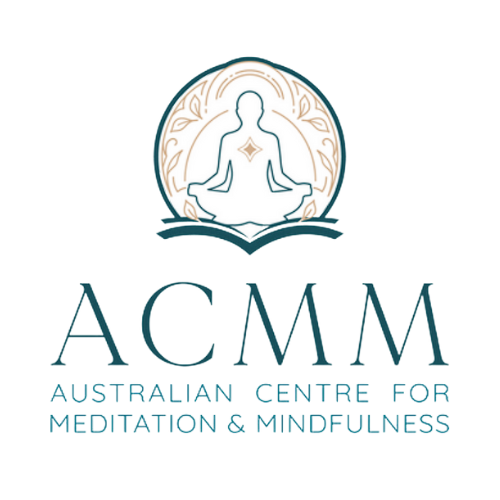Mindfulness, Meditation and massage are different therapies. When combined, they can provide a deeper sense of relaxation and well-being. Both therapies focus on the mind-body connection, and the combination brings about a stronger healing effect. Meditation allows us to clear the mind and to relax more deeply. While massage helps to release tension and bring relief to sore and aching muscles. Together these therapies can create a sense of harmony in the body, mind, and spirit. By incorporating meditation and massage into one’s routine, the individual can benefit from improved physical and mental health.
How mindfulness and meditation can support massage clients
As massage therapists, we are able to connect with and tune into multiple layers of a person’s health and wellbeing journey. We hold an opportunity to provide healing treatments and therapeutic techniques to assist with the body’s natural healing potential. Our intentions are to see our patients improve their mobility and general health outcomes through massage therapy. Having a good understanding of how the muscles, joints and internal systems can impact a person’s physical health.
A lot of massage therapists will know intuitively from experience that we can have a much greater impact on our client’s wellbeing. Therapists can do this by simply providing our client with one of the most basic of needs – human touch. We know we are impacting more than just their physical health. As a therapist, we are ultimately supporting their mental, emotional and spiritual health too.
When was the last time you really considered how vulnerable it can feel to step into a treatment room with a complete stranger? Let alone feel comfortable enough to remove certain items of clothing and be physically touched for a prolonged period of time.

There may be uncertainty and some unease for the client about the process of stepping into this treatment space. As a therapist, it is our job to provide a safe space to help the client feel at ease. You are supporting them not just to achieve their physical outcomes, but their wider needs. Which they may or may not be aware of.
Mindfulness and Meditation for a Massage Therapist’s self care
You also have a responsibility to yourself, to understand and respect your own professional boundaries. It’s important to recognize that way you show up for your clients can have an impact on how they feel. Improving your “bedside manner” is an important skill. This is a term used in the medical field to refer to how healthcare professionals show compassion and empathy for their patients. Letting go of the dry clinical discussion that may leave patients feeling unseen, and perhaps anxious.
We have a unique opportunity in massage therapy to bridge a gap in healthcare and enhance therapeutic benefits for our clients. By providing a more holistic and empathic approach to health and wellbeing, we help clients to feel seen and heard. This makes the whole experience feel more tailored to their specific needs.
This will give you an edge to your treatments. It is often overlooked in our training as massage therapists. There is more depth to be explored in how we can truly be of service in a meaningful way for our clients. Whilst also being accountable for our own emotional and spiritual wellbeing.
There are many ways to integrate meditation and mindfulness into your massage treatments. Enabling you to encompass a more holistic style of therapy.
Grounding for your client and yourself
Grounding involves guiding awareness to the senses and becoming aware of the space around you and tuning into the present moment.
You might like to do this as a short practice in between clients and before you have brought your client into the room. Taking a moment to tune in to your body and to the space. Gathering your energy, releasing previous client’s stories, bringing your attention back to the present moment.
You might like to take a moment to ground into your sense of touch upon first contact with your client. Slowing down and asking permission from their body (energetically) to receive the touch. This feels kind and respectful for the client, and gives you a moment to really tune in and connect with them.
Grounding can be done as a stand alone practice with the client as they arrive in the room, before you have begun treatment or any physical contact. You might like to guide them with a few words as you are introducing physical touch and allow them to settle into the space through their senses. You could have them feel into the connection on the treatment table. Noticing points of contact and allowing their body to be held and fully supported.
Allowing for more silence and space
We often have a lot of time during a treatment where our client might like to enjoy some quiet time. Without the obligation to keep a conversation with you going while they are trying to relax and get the most out of their treatment time. To honour this, it is important for you to be aware of your own need to feel heard. Ensure you are taking care of yourself and seeking support outside of this therapeutic space. So that you aren’t burdening your client with unnecessary chat during their paid treatment time. You are also giving your client precious moments to embrace the silence which they may not have opportunities to do outside of this space. Allowing them to become familiar with silence which may be just what they are needing most in that moment.
By establishing your own regular meditation practice, you can become more familiar and comfortable with being in silence. This quiet confidence you bring into the treatment space for your client can offer an opportunity for them to reconnect to their body.

Building rapport through reflective listening skills
In ACMM Meditation Teacher Training Courses, you will have the opportunity to learn some powerful empathic listening skills. These translate perfectly into a massage treatment. Being able to listen, validate and reflect your clients experience will help them feel more at ease. It will also help to build a sense of trust.They are more likely to feel that you have heard their concerns. That have sought to understand them better to be able to give them the best possible treatment.
These skills also help you to be aware of your own need for validation and compassion. Helping you navigate the best way to recognize how to keep the conversation about your client, not you. Ensuring you are not projecting unmet needs onto your client. Instead, keeping focused on what they have shared and how best to support them.
This is an important and underestimated skill that all massage therapists should become familiar with. We do such important work, and we may be triggered by what someone has shared in the therapeutic space. Ensure you are seeking support if you are feeling your challenges are showing up in your work as a massage therapist.
Cultivating deeper relaxation
The body responds much better to treatment if the client is able to physically and mentally relax. The therapist can assist with this process, particularly for clients who struggle to let go and trust. Remember your professionalism and ability to listen to and validate what they have shared goes a long way in building that trust. This enables clients to relax. Introducing a grounding technique can help to begin with, inviting them to release any holding on. Supporting them to let go or surrender their weight into the table, and let go with the outbreath. Learning a few simple breathing techniques to guide them to become aware of their breath to assist with relaxing if they are feeling tight and tense.
No matter how much you try, sometimes your client might be simply unable to truly relax during their treatment. Don’t see this as a failure on your part. Nor does it mean they are incapable of relaxing. It may just take some time as the trust and rapport is established. They are still receiving many benefits from being there and receiving care.

Offering a meditation and massage combined treatment
You could offer a specialized treatment that incorporates a guided meditation. You could use the massage itself as the part of the meditation that leads to inner quiet, peace and relaxation. Using a grounding technique at the beginning and the end of the treatment helps your client to ground after their session. It helps them feel safe and supported.
This would be a unique experience for your clients. Optimizing the benefits of both relaxation massage therapy and mindfulness and meditation in one treatment! How beautiful does that sound?
This could be marketed as your signature treatment. Enabling you to attract clients to your unique style of mindful massage therapy.
These are just some of the ways which meditation and mindfulness teacher training can enhance your massage practice. After 20 years of being a remedial massage therapist, I can honestly say the best thing I did for my massage practice was to study with ACMM. I gained so much more understanding about the role of the holistic therapist and how complementary these modalities are.
I have felt more connected with my work and my clients and experienced more job satisfaction and fulfilment. I’ve made personal and professional decisions that have felt more aligned with my values and support the work I want to be doing in the world.
I have attracted and retained long term clients like never before! It has breathed a new life energy and enthusiasm into my therapeutic offerings. I have received so much more interest for my meditation groups because people are more aware now of how meditation can benefit them. The best thing is being able to introduce people to that missing link they were looking for in their health and wellbeing toolkit.
Author – ACMM Coach, Jacqui Mulholland
At ACMM, you will discover a world of online and accredited meditation and mindfulness teacher training. We offer Certificate, Advanced Certificate, and Diploma Training Options, with optional Business Development Support alongside and after your training.
Find out if our courses are the right fit for you. Book a Zoom Discovery Call with us today!





